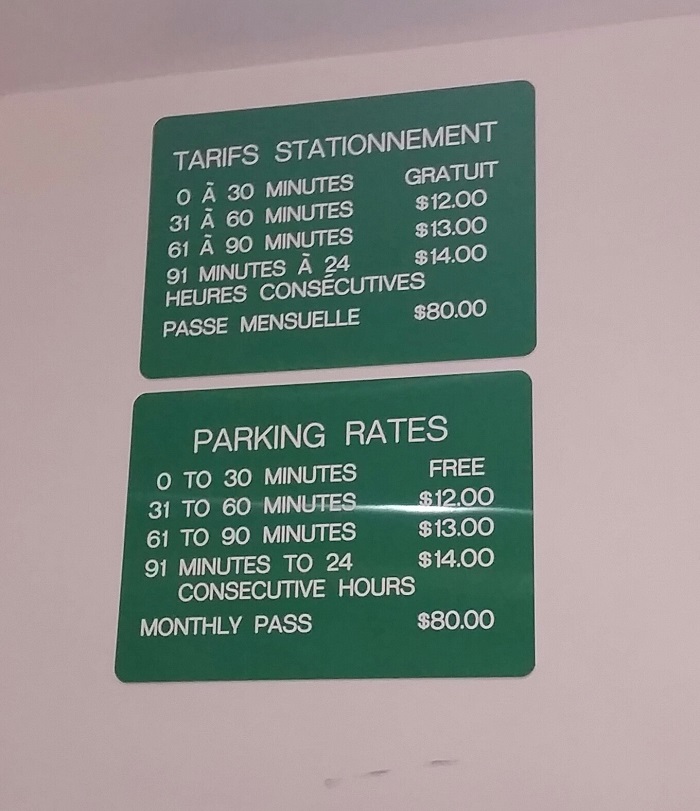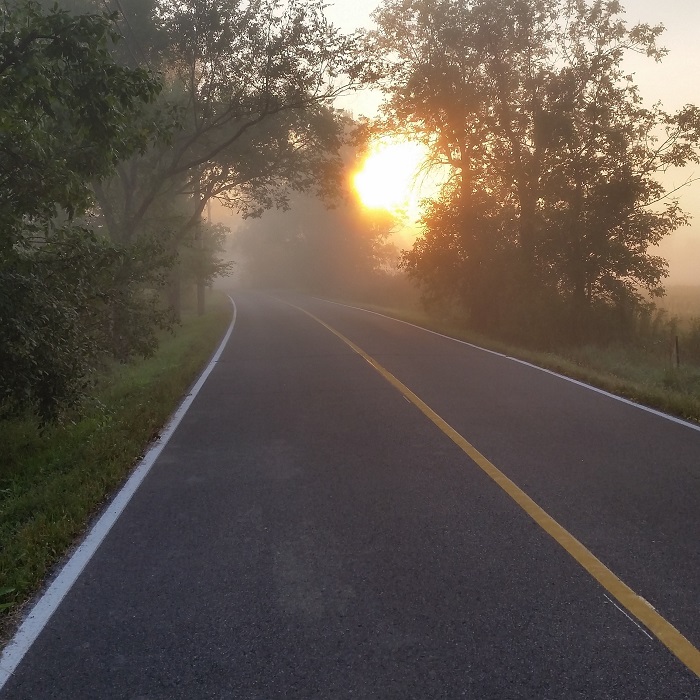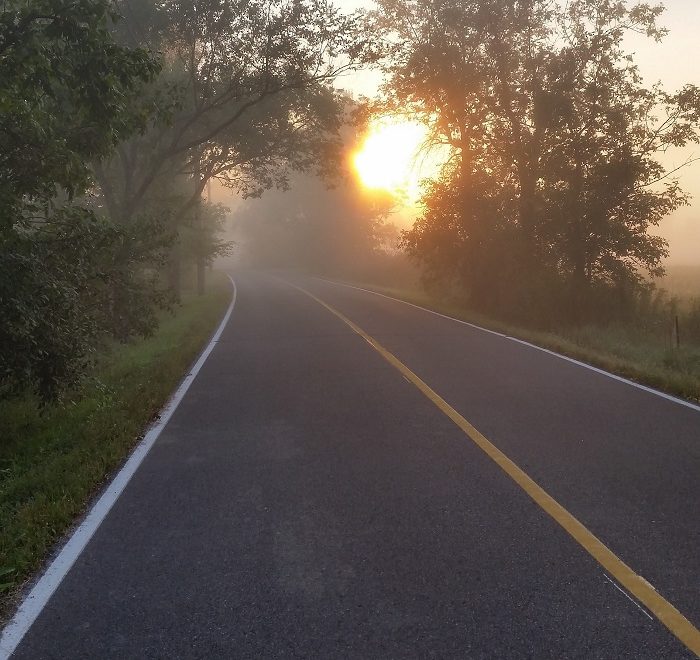The cycling season on the western portion of Montréal Island usually begins in mid- to late March, once all the snow and underlying ice have melted off the roadsides, and ends when the winter snow starts to fall again in November or early December.
It’s a beautiful area for cycling; my entire route is along waterfronts; it follows a stream, a river, and then the shores of 2 different lakes. Montréal’s sometimes called a year-round cycling city, but the only true four-season bike routes (which are plowed clear of snow during the colder months) are in the ‘centre-ville’ or downtown core area.
When I broke my arm on March 3 (a Colles’ fracture, or snapped radius), the snow was already starting to melt. There wasn’t enough of it left for my favorite winter sports, cross-country skiing and snowshoeing, so I’d started getting my body ready to switch from winter sports to spring cycling.
I do this after the holidays each year by using the stationary bikes at my gym and home fairly intensively, before work and on weekends. I’d “ride” 5 or 6 times a week, for at least an hour (about 20 km or 13 miles) each time.
That’s in addition to weight training 2 or 3 times a week; using light 10 to 15 kg weights to do very controlled ‘slow lifts’ for the arms, 90 lbs on a cable and pulley machine for the lats (latissimus dorsi; the largest upper body muscles), and 105 lbs to 190 lbs on different weight training machines for the legs and glutes (gluteal muscles; the largest of the lower body; the butt and thighs).
If you think that’s a lot of time on an exercise bike, it’s not much compared to my husband’s 2 hour rides – at a much faster pace (60 km or 37.2 miles) – 5 or 6 times a week! As you’ve probably guessed by now, we both really enjoy cycling. He’ll ride up to 10,000 km (6,215 miles) in a season, and I ride about half of that distance.
Don’t get the impression that I’m some kind of athlete, or competing in sports; I’m just a middle-aged office worker, trying to stay in good enough shape to keep doing the activities I really love – outdoor sports!
So one of my biggest concerns, with the fracture, was to miss as little of our short cycling season as possible; and not to lose the leg muscles I’d already built up in preparation for the start of our biking season. I checked with the orthopedic surgeon assigned to my follow-up care at the local community hospital, and he said it’d be fine to use a stationary bike as long as I didn’t sweat so much that the cast would get damp on the inside.
My family physician and I go to the same gym (at different times of day), and he weight trains fairly seriously, so I asked him whether he had any ideas for arm, shoulder, and upper back exercises I could do with a cast on my arm.
His exceedingly reasonable response was that I should let my fracture heal, and use this as an opportunity to concentrate more on lower body exercises. So I used stationary bikes and did ‘sweat-free’ exercises for my legs and glutes, until the cast was removed.
In late March my job came to an end after a year, so I was out doing interviews for a new contract with a cast on my arm. I was able to find a very interesting new bioethics contract quickly, that seemed to be a great fit for me. And as an added bonus, I’d be working with some of the people I’d known – and had kept in touch with – when we all worked at different company about 15 years earlier.
I was able to push the start date back a couple of weeks; I didn’t want to start a new job until the cast had come off, because it’d be difficult to take notes, use the computer effectively, etc. otherwise. With the cast on my right arm, I couldn’t even shake hands!
My hand was also very swollen and painful at this point; the orthopedic surgeon (to whom I’d been assigned by the hospital, even though I didn’t require surgery) had told me that some adults with a casted arm can have problems with swelling, and that the swelling was causing the pain.
So I was hoping that the swelling – and pain – would subside within a few days of having the cast removed. I planned for a few quiet days at home, after the cast was removed, for that swelling to subside, before starting the new contract.
To make a long story short, the pain and swelling didn’t go away after the cast was removed. In fact, my hand kept getting worse. It took until May 27th to get a diagnosis (click here for that story); my fracture had triggered a rare neuro-inflammatory disease.
This disease causes neuropathic pain, and can also damage the bones and joints in the affected area of the body; it often also changes the hair and nail growth, and can create a host of other varied symptoms. And it spreads along the sympathetic nerves, sometimes jumping from arm to arm or arm to leg.
The day of my diagnosis, I took an early lunch break from work and drove over to my local community hospital for what I’d expected to be a 15-minute consultation with another specialist physician – a neuro-anesthesiologist – at 1115. This appointment was meant to be only to confirm a tentative diagnosis made the previous day. Well, I didn’t get to leave the hospital after that consultation…

Instead, at 1215 I underwent the first of 6 day-surgery procedures within 2 weeks (see the post 10 days, 6 day-surgery procedures). These procedures were all the same, and their combined purpose was to try to stop the disease from spreading any further up my arm. It’d started in my fingertips about a week after the fracture, and by the time I was diagnosed it had spread to above my wrist.
Then last week (on June 16th) I underwent a different type of procedure, much longer and more painful, to try to get the joints of my fingers and wrist working again. By this time my fingers had started to curl into a claw-like position, and none of my physiotherapists or physicians could unblock or unlock these joints.
I’ve also been having treatments at a physiotherapy clinic for 2 hours after work, 3 times a week, for months. During this entire period, I kept going to my gym, as exercise helps me deal with stressful situations and difficulties in life.
And I was still hoping to get back on my bike as soon as possible. I’d asked my neuro-anesthesiologist several times (probably after every appointment and procedure!) whether I could try cycling outside, but he kept asking me to “wait another little while”.
He left on vacation yesterday, for a few weeks, and I decided that today would be the day that I’d try cycling outdoors again. On a quiet road, early in the morning without much traffic. And with my husband riding right beside me – just in case. I got on my bike somewhat hesitantly, planning to go for a very short ride; I’d told my husband I’d just bike for a few minutes.

The moment I started pedalling my bicycle again, outside, I went from being a patient to being a person. I hadn’t realized it, but I’d been so caught up in the whirlwind of medical procedures and treatments that I’d stopped feeling like… me.
I ended up riding 18.26 km (about 10 miles); just over 45 minutes. My hand puffed up, and I had a really nasty pain flare that lasted for a few hours afterwards. But I decided it was worth it; that the joy I felt riding my bike – being me again – would offset any symptoms that followed. In any case, I’d often get pain flares while doing… absolutely nothing.
Today I went from being a patient to being a person, and I don’t want to go back. I don’t mean that I’ll stop my treatments, or cancel the day-surgery procedure scheduled for next month (my 8th in less than 2 months); I mean I won’t let being a patient take over my life again.
My new goal is to find a way to squeeze time out of my intense schedule of medications, physiotherapy sessions, and medical treatments (while working full-time!) to do some of the things I love – and that I can still do – with this disease.

So I’m planning to ride again tomorrow, and am already thinking of other ways to avoid feeling again that I’m “only” a patient; the horrid feeling I had that my life revolved around only medical procedures and treatments!
(I’m writing this at 0220, being kept awake by a horrible pain flare, but the bike ride was still worth it; and yes, I’m still planning to go cycling tomorrow. Oh wait, I mean later today!)

